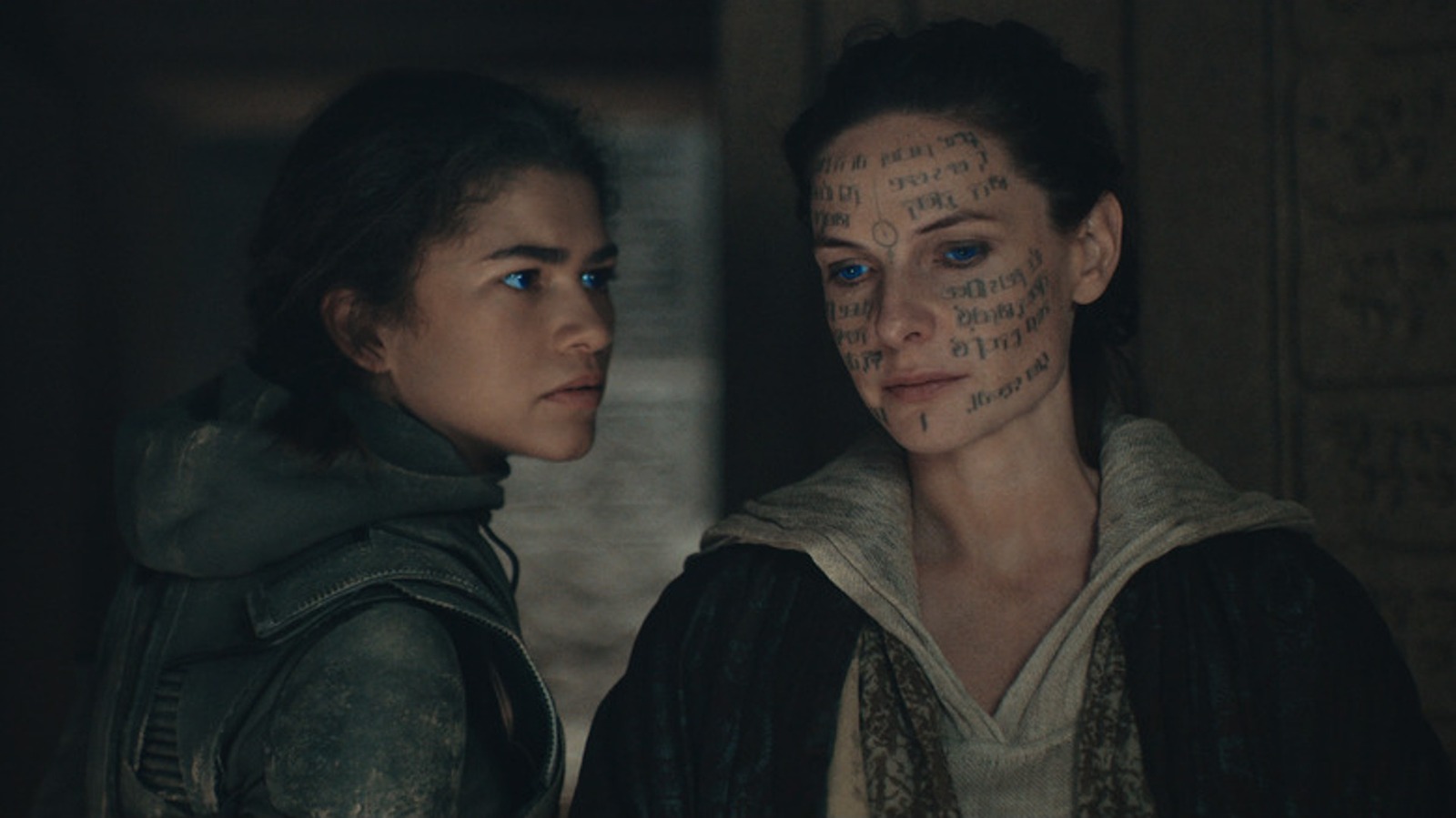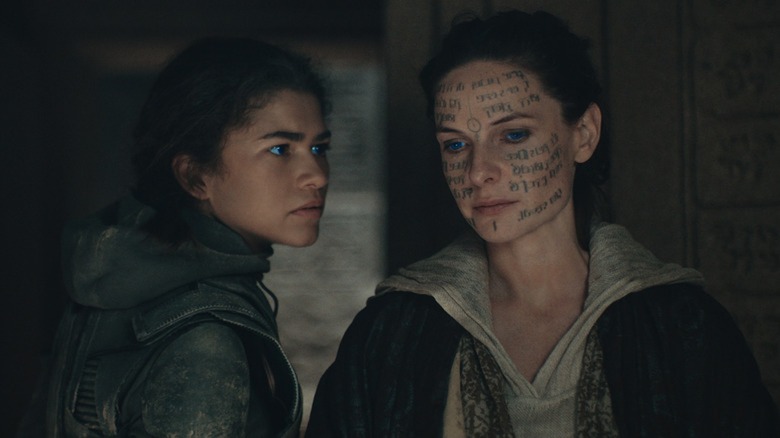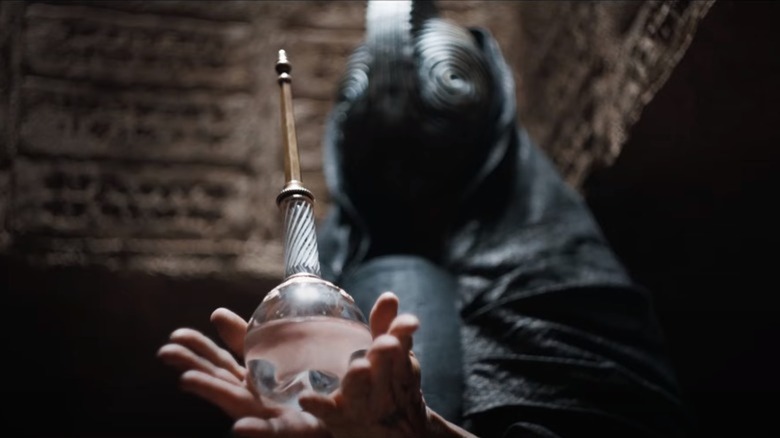This post contains spoilers for Frank Herbert's Dune series of novels.
In Denis Villeneuve's Dune: Part II, Paul (Timothe Chalamet) is introduced to the ways of the Fremen, who gradually welcome him as one of their own. This feeling is cemented once Paul passes the Wormriding ceremony with flying colours, leaping atop a giant sandworm in a rather impressive display of "desert prowess". Sandworms, which the Fremen call Shai-Hulud, are central to the cultural values of the Arakin natives, who associate these creatures with a sacred deity. Since Shai-Hulud commands both fear and respect, it is not surprising that the term literally translates to notions of eternity, with connotations of immortality attached to it. To co-exist with Shai-Hulud is to respect life itself and revel in the mystifying powers embedded in her DNA.
Frank Herbert's Dune knowingly enters the complex ecosystem of Arrakiscontrasting the smug ignorance of the land's colonizing forces with the Fremen's keen awareness of the natural balance needed for survival. The likes of House Harkonnen may have been able to mine the desert planet's vast reserves of the spice melange (a coveted narcotic integral to trade and space travel in the known universe), but only the Fremen can grasp and unlock its true spiritual potential. These gaps in intuitive knowledge bring down the reality of the practices of the closed Fremeni culture, which is disrupted after Paul receives the title of Usul and becomes an honorary member. Because Paul proves himself exceptional for reasons that are misinterpreted as the awakening of the Messiah, he is able to survive a rite of passage that no human or non-Fremen have ever managed. This life-changing ceremony that Paul undergoes focuses on the Water of Life.
What exactly is the water of life, and why does Paul go through the associated ceremony for which he was not meant? Let's take a look at what Herbert has to say about this poisonous blue liquid.
The water of life in Dune is both poisonous and transformative
The sanctity surrounding Shai-Hulud feeds directly into the creation of the Water of Life, which begins as bile extracted from the body of a young sandworm on the brink of death. This act of sacrifice has ritualistic connotations, as the extracted bright blue liquid was used as a catalyst to induce genetic memories in a Sayadina (a low-ranking priestess) about to become a Reverend Mother. This ceremony was held only for women in Arrakis when the elderly Sayadina would be at risk of losing integral memories before consecration. Although the Water of Life is unique to the Fremen, Bene Gesserit sisters like Lady Jessica (Rebecca Ferguson) were preemptively trained to withstand and combat its intense, deadly effects as part of their age-old scheme to unleash The Kwisatz Haderach.
The Water of Life is deadly to all humans, along with anyone not trained in the nerve/muscle body control needed to survive its effects and utilize genetic memories. The test lies in purifying the poisonous bile into a harmless liquid, which is real Water of Life, distilled by Sayadina who became Reverend Mother after successfully converting her. Jessica was able to endure this ceremony, thanks to her Bene Gesserit training, but the Fremen attributed this to her status as the mother of Quisatz Haderach. This so-called messiah figure will essentially be the first and only male Bene Gesserit, prophesied to unlock both male and female genetic memories and bridge the time-space continuum. It is worth noting that the Fremeni's interpretation of the Kwisatz Haderach was the culmination of their own cultural/spiritual beliefs and decades of entrenched Bene Gesserit religious propaganda.
To test the truth of these beliefs, Paul chose to undergo the ceremony, as the outcome will determine the truth of the Kwisatz Haderach. (Un)fortunately, Paul survives and successfully turns the sandworm gall into the Water of Life, emerging a changed man armed with awareness and a terrifying Messiah complex.
Source link


